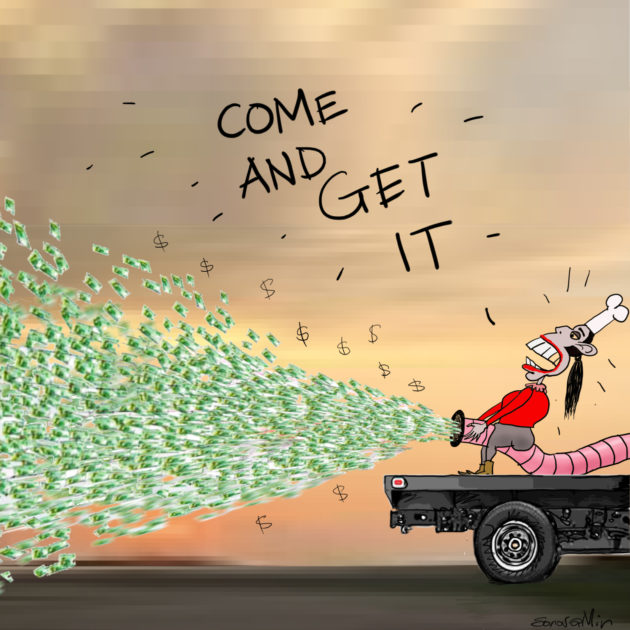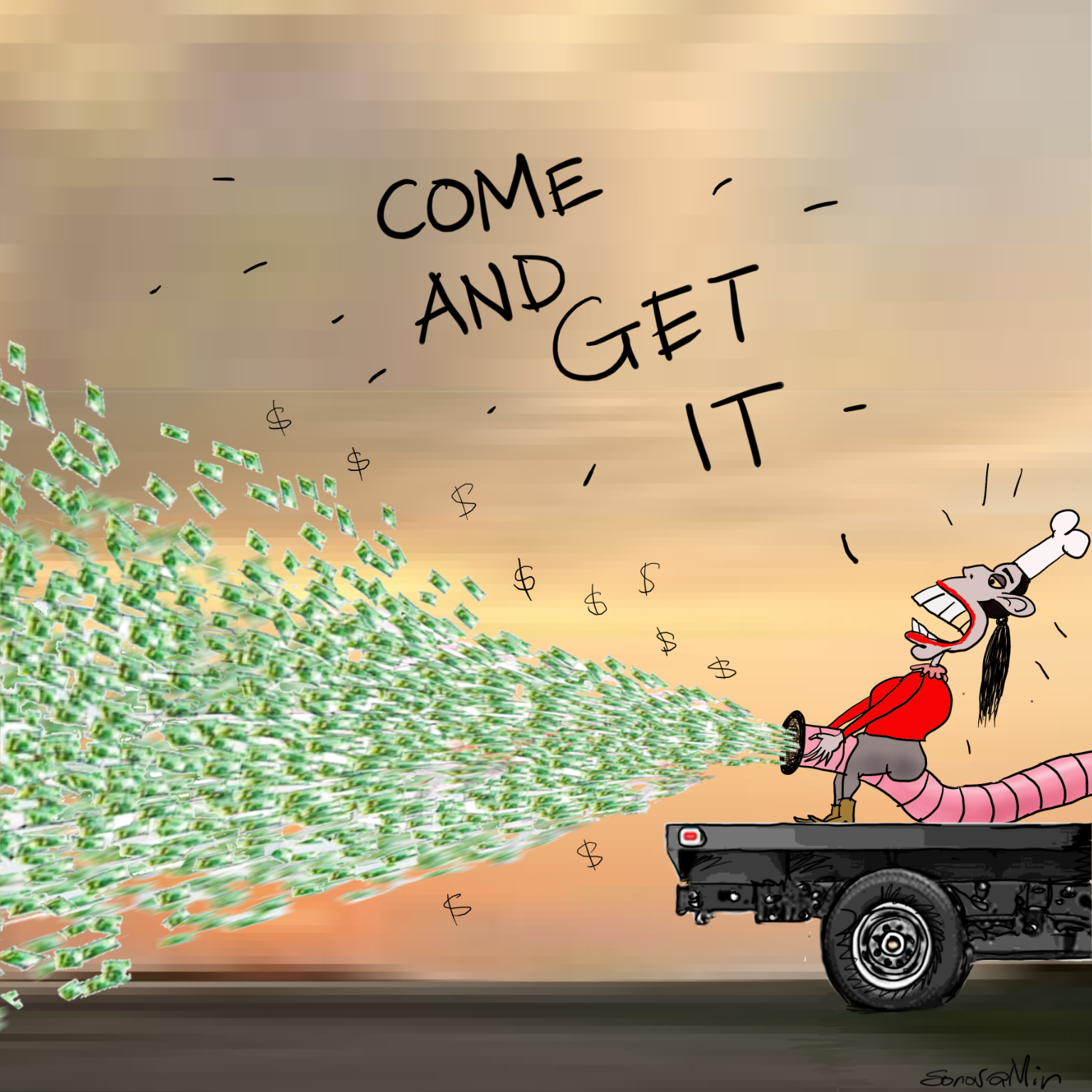Britain was once famously hailed as a nation of shopkeepers, perhaps not by Napoleon himself, but certainly by the classical liberal Adam Smith, who published The Wealth of Nations in 1776 and laid the foundations for free-market economic theory. By the eighteenth century, the United Kingdom was an essentially commercial as well as a naval nation, and its subsequent transformation from mercantilism to fully-fledged industrialism laid the basis for a century of British hegemony after the Battle of Waterloo in 1815.
New Zealand, once a nation of farmers and innovators, was also once mercantilist. More recently though, under Marxist spiritualist Jacinda Ardern, the island nation has become a cynosure of left-wing ideological smugness. Our political capital, once founded in commerce, is now expended lecturing the Australians on refugees, being ‘inclusive’, declaring climate emergencies and de-carbonising what’s left of our economy. Our financial capital has long since been expended. Survival under this New Order comes from printing money.
The Reserve Bank of New Zealand has for some time been heavily engaged in ‘quantitative easing’. This occurs when central banks create new money to buy bonds from the financial sector by crediting the reserve accounts of their private banks in exchange. The aim of this is to lower long-term interest rates and encourage private banks to lend and invest in the economy, in order to boost both employment and inflation.
In August the RBNZ extended its Large-Scale Asset Purchase programme, committing to buying up to $100 billion of mostly New Zealand Government Bonds on the secondary market by June 2022. Since the LSAP was launched, the RBNZ has bought $42.6 billion worth of bonds. Should it keep buying bonds until June 2022, it will need to slow the rate at which it does so to avoid breaching the $100 billion cap.
From a traditionalist’s point of view there are two dangers associated with this. Firstly, if the money supply grows at a significantly faster rate than GDP then inflation would remain lower for longer. If economic expectations fall further, we then run the risk of deflation. Unemployment would remain high and the exchange rate would rise, hurting what remains of our exports.
Secondly, conventional wisdom holds that excessive government borrowing over an extended period of time is irresponsible. With debts of around $100,000 per household, we are creating an inter-generational problem which our successors will inherit.
Never fear, says the left. A ‘solution’ which is beginning to be promoted by academics and civil servants is Modern Monetary Theory. MMT holds that a government issuing its own currency has no true financial limit on what it can spend on goods and services for sale in that currency. It doesn’t have to earn or borrow money before spending it, like a household does, and so does not need to balance the books.
This turns the idea of government spending being taxpayer-funded on its head, with MMT proponents labelling the notion of taxpayer funding ‘a myth’. Governments with sovereign currencies may create and spend whatever they like. Taxation does have a vital function, but it isn’t what we had hitherto assumed.
Taxes now only exist to give money its value. By requiring us to pay taxes in the currency it issues, the government creates demand for that money. To do this, we sell our labour in return for the government’s currency. Once we accept this premise, say the Modern Monetarists, we can readily see the government actually has to spend money into circulation before we can earn it, and taxes don’t finance government spending at all. Governments can spend as much as they like.
Prominent post-Keynesian economist Professor Stephanie Kelton describes the MMT project as ‘replacing an artificial revenue constraint with a real inflation constraint. … The limit is the impact of the spending. Not the spending itself, and not the deficit. … Inflation is the binding constraint. … MMT is about identifying the real limits, and not cowering in fear of running out of money or adding to the deficit.’
Taxation therefore comes into its own as a means to not only ‘redistribute’ income and wealth, but as a behavioural tool to shape the New Society: used to govern what we eat, or how much we pollute; discourage ‘harmful behaviours’ and encourage ‘more beneficial ones’.
Because money paid to the government in taxes is ‘removed from the system entirely and ceases to exist’, our government’s recent tax increases for ‘rich pricks’ serve no actual revenue-generating purpose. Tax on the productive sector by, for example, stopping it from growing, instead creates ‘real resource space’ enabling the government to spend more without creating inflation. Taxation puts the handbrake on spending on goods and services to free up space for the government to purchase and provide those resources to the public instead.
But won’t spiralling government deficits created by the Marxists subsuming the means of production scare off buyers of government bonds and harm the economy? No, we are told. This is another common myth, founded in the ‘mistaken’ belief that investors fund government spending when they buy the bonds the government issues as ‘debt’. MMT does away with all such ‘myths and misunderstandings’ which call for financial prudence.

In short, there’s no longer such a thing as ‘we can’t afford it’, and by extension, there’s no need to defer gratification or to work for the things we desire. Big Government will decide what we need and provide it for us. Those who have ‘too much’ will have it taken from them on ideological rather than fiscal policy grounds.
Big Government sets the agenda and gets to spend what it wants to shape society in its own image. After the COVID prison, next comes the climate change paradigm and the prevention of ‘ecological breakdown’. MMT offers ‘clear thinking’ on this as well as the ‘vehicle to deliver’.
Meanwhile, from a population circa 4.8 million, New Zealand funds 1,258,500 people on the pension and 369,300 on a ‘main benefit’. Our government claims that Working for Families (payments to low- and middle-income families) benefits 650,000 families, or 1,690,000 people, based on an average family size of 2.6. This implies that 3,317,800 or 69% of the population is on some sort of benefit. Making allowance for double-counting of people on ‘main benefits’ I contend that well over half of New Zealand’s population are already beneficiaries — and loving it.
Do we even care? Thanks to Modern Monetary Theory the left has lots of reasons not to. As for actually working for a living, my goodness! That’s so ‘last year’. Get with the programme. Don’t you know it’s 2021 and the destination arrived at is Fool’s Paradise.
Please share this BFD article so others can discover The BFD.

